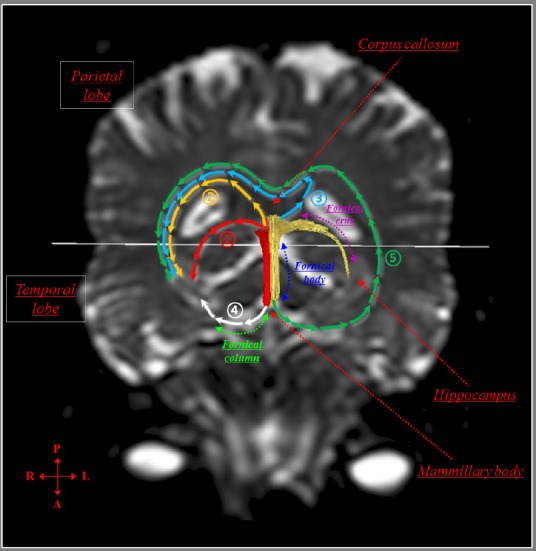Figure 1.

Mechanisms of recovery of injured fornical crus determined by diffusion tensor tractography.
①Mechanism 1: Recovery through the neural tract from an injured fornical crus to the medial temporal lobe via the normal pathway of the fornical crus. ② Mechanism 2: Recovery through the neural tract originating from an ipsi-lesional fornical body connected to the ipsi-lesional medial temporal lobe via the splenium of the corpus callosum. ③Mechanism 3: Recovery through the neural tract from the ipsi-lesional fornical body extending to the contra-lesional medial temporal lobe via the splenium of the corpus callosum. ④ Mechanism 4: Recovery through the neural tract originating from the ipsi-lesional fornical column connected to the ipsi-lesional medial temporal lobe. ⑤Mechanism 5: Recovery through the nerve tract originating from the contra-lesional fornical column connected to the ipsi-lesional medial temporal lobe via the contra-lesional medial temporal lobe and the splenium of the corpus callosum.
